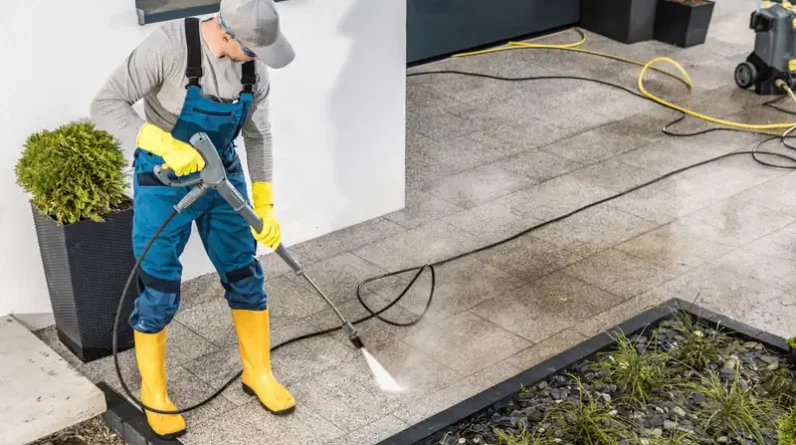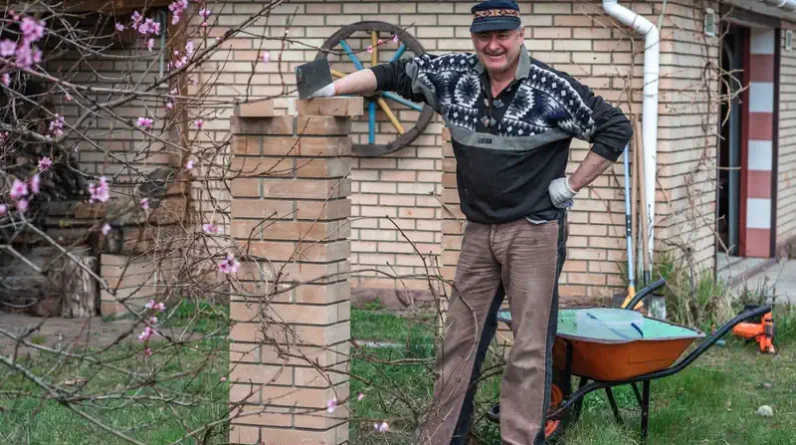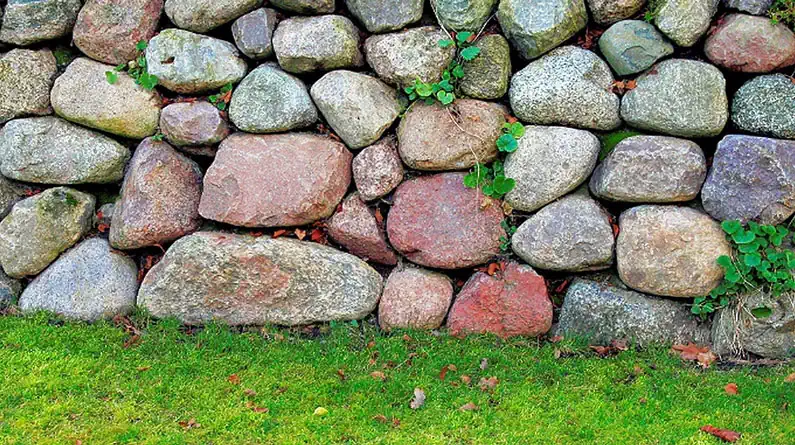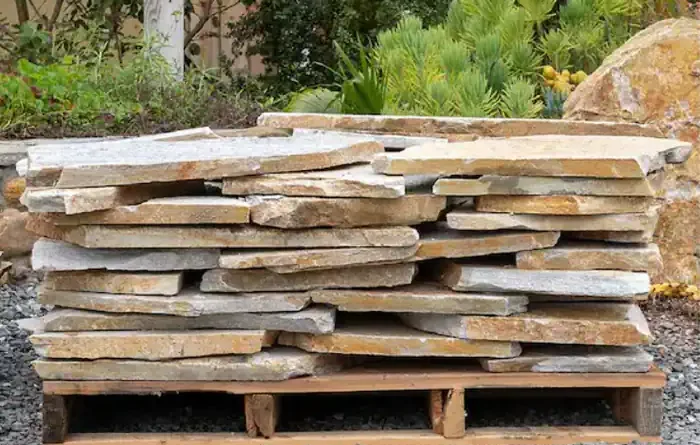
Hardscaping refers to the hard, non-living elements used in landscape design. This includes materials such as stone, concrete, brick, and even metal. It’s a great way to add visual interest and structure to your yard and create an inviting outdoor space. When it comes to defining hardscaping, there are many types of elements that can be included in a project. These include pathways, patios, retaining walls, fences, fire pits, driveways, pools and spas, terraces and more.
Hardscaping materials come in various shapes and sizes – from large stones for retaining walls to small pebbles for pathways – so you’ll have plenty of options when planning out your space. You’ll also need to consider the style of material you want; some popular choices include flagstone or pavers for patio areas and river rocks for landscaping features like waterfalls or ponds. Ultimately, choosing the right hardscaping materials will depend on your budget and taste – but with so many possibilities available today you’re sure to find something perfect for your yard!
Benefits And Drawbacks Of Different Materials
When it comes to hardscaping, there are a variety of material types and usage options available. Each type has its own set of benefits and drawbacks that need to be taken into consideration when selecting the right materials for your yard. Here’s a look at some of the main factors:
- Durability: Some materials may last longer than others depending on their construction and how much wear they will endure.
- Maintenance: Depending on the material chosen, you may have to do more or less maintenance in order to keep them looking great.
- Cost: Different materials can range in price, so consider what fits within your budget before making a purchase.
Ultimately, choosing the right hardscaping materials needs to come down to personal preference as well as practicality. Consider the climate where you live, what kind of usage it will get, and any other environmental considerations before making your final decision. That way, you’ll know you’re getting something that looks good and is built to last.
Types Of Materials Used For Hardscaping
Hardscaping can be used to create an inviting outdoor space and add beauty, texture, and character to any landscape. There are many materials that can be used for hardscaping, including flagstone, concrete pavers, brick walkways, gravel paths, and river rock. Here are pros and cons for a few commonly used materials.
| Material | Pros | Cons |
|---|---|---|
| Flagstone | Durable & natural look. | Expensive & heavy. |
| Concrete Pavers | Affordable & versatile design possibilities. | Susceptible to cracking over time from temperature changes or moisture damage. |
| Brick Walkway | Low maintenance & wide range of color options available for customization. | Prone to weed growth between bricks if not properly installed with a geotextile fabric underlayment below the surface layer of mortar, or sand and gravel filler mixes. |
| Gravel Paths | Inexpensive option that can be easily repaired/replaced as needed without requiring professional assistance. Also provides good drainage capabilities when properly installed on an even slope away from structures. | Requires periodic weeding and raking maintenance to maintain appearance and prevent sinking areas developing in high pedestrian traffic areas. May also become unstable during rain events due to the amount of water absorbed by the gravel substrate. |
| River Rock | Very attractive natural look that is easy to install & relatively low cost per square foot compared to other materials. | Difficult to remove, once established, due to its irregular shapes making repair work more challenging than standard paver stones. Also has poor lateral strength so it should not be used for load bearing applications like driveways or patio floorings. |
When selecting the material for your hardscape project, it is important to consider both the pros and cons of each option in relation to your budget, aesthetic preferences, maintenance needs and installation requirements before making a final decision. No matter what type of material you choose for your hardscaping project, you can have confidence knowing that with proper planning and execution your outdoor living space will look beautiful for years to come!
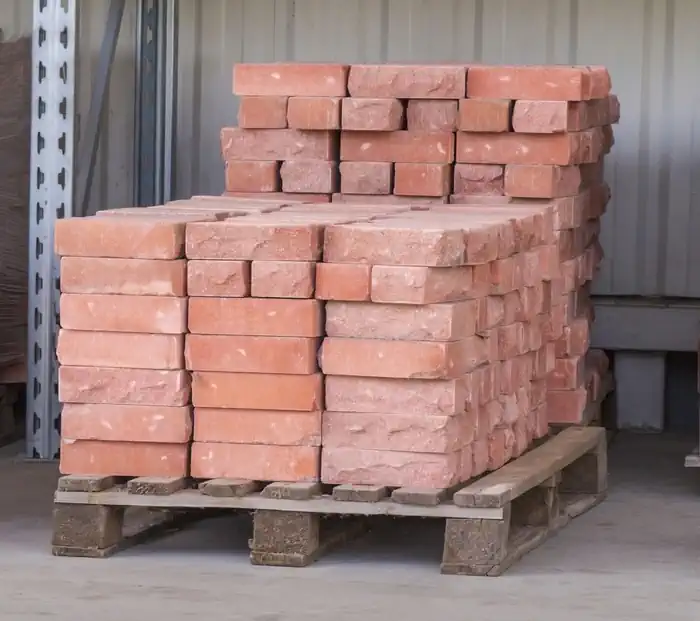
Assessing Your Yard’s Needs
Assessing your yard’s needs is essential when it comes to selecting the best materials for hardscaping. You must consider what your yard requires, and weigh those requirements against any budget constraints you may have. To get started, think about how long lasting the material should be, how much sun or shade exposure it will receive, and if there are areas of moisture that need to be taken into account when making a selection. You’ll also want to consider what kind of maintenance might be required for each type of material before making a final decision on which one would work best in your particular situation.
Once you’ve established your yard’s requirements and assessed potential costs associated with different types of materials, you can begin narrowing down your options until you find just the right fit. Take into consideration factors such as durability, ease of upkeep, style preference, color scheme compatibility and available resources while choosing between materials like wood decking, concrete pavers or stone slabs. Additionally, don’t forget to factor in safety concerns by considering slip resistance levels and proper drainage solutions.
By taking these steps ahead of time and doing thorough research beforehand on all possible hardscaping materials to suit your needs and budget planning goals, you’ll end up with an outdoor space that fits both form and function for many years to come.
Budget Considerations
When it comes to hardscaping materials, budgeting is also an essential part of the process. It’s important to determine your price range and consider all cost factors when selecting the right material for your yard. You should take into account the durability, maintenance needs, and overall look of the material before committing to a purchase. This will help you stay within your financial limits while getting the most cost-effective result.
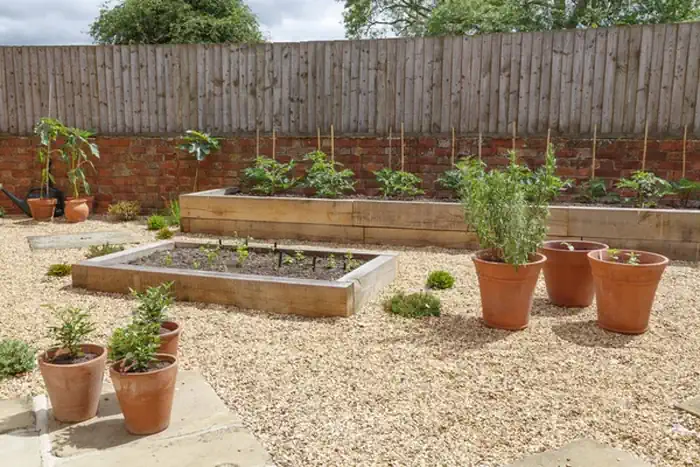
There are many budgeting options available that can help you plan out costs associated with hardscaping materials. For example, if you’re planning on paving a walkway in your backyard, then you’ll want to factor in the price of pavers or stones as well as any additional supplies such as mortar or gravel needed to complete installation. Additionally, researching different types of materials and their corresponding prices may be beneficial in helping you make an informed decision about which one best fits within your project’s budget.
No matter what type of hardscaping materials you choose for your yard, making sure they fit within your budget is key. By taking time to research various products and compare pricing options beforehand, it’s possible to find high-quality items at affordable prices that meet both aesthetic and functional requirements for outdoor projects.
Installation Tips
The sun is out and the birds are singing, which can only mean one thing – it’s time to start installing hardscaping. Whether you’re a DIY enthusiast or just looking for some advice on yard hardscaping, finding the right materials and installation tips can be daunting. Here are four essential considerations when selecting your hardscaping materials:
| Strength & Durability | Cost-effectiveness | Maintenance Requirements | Aesthetics |
|---|---|---|---|
| Will last through all seasons | Is within budget | Low upkeep needed | Enhances overall look of space |
First, consider strength and durability – will the material withstand wear over time? Second, think about cost-effectiveness – does the price fit into your budget? Third, evaluate maintenance requirements – do you need periodic repairs or replacements? And fourth, factor in aesthetics – how will the material enhance the overall look of your space?
When it comes to installing these hardscaping materials, keep in mind that doing so safely should always come first. No matter what project you take on, make sure to use proper tools and safety equipment as well as follow instructions carefully. Additionally, don’t hesitate to consult an expert if there’s something beyond your skill level. With these important factors taken into account, you can create an outdoor oasis with ease!
Frequently Asked Questions
What Is The Most Durable Material For Hardscaping?
When it comes to hardscaping, one of the most important considerations is durability. Different materials have varying levels of longevity, and you want to make sure that your hardscape lasts as long as possible. Some of the most durable materials for hardscaping include concrete, brick, stone, pavers, and gravel.
Concrete is a great option if you want an extremely strong foundation for your hardscape design. It’s also fairly inexpensive and easy to install. Brick provides an elegant look and can last for decades with proper maintenance. Stone is highly resilient and will stand up well against various weather conditions. Pavers are more expensive than other options but provide excellent traction on paths and patios when wet or icy. Finally, gravel offers a unique aesthetic while providing good drainage in areas where water accumulates quickly.
When selecting hardscaping materials for your yard, here are some key points to consider:
1) Consider how much foot traffic the area will receive;
2) Decide whether you need material that can withstand extreme temperatures;
3) Determine what type of aesthetic you’re trying to achieve with your hardscape design.
Taking these aspects into account will help ensure that you choose the right material for your project that will last through all types of weather conditions over time.
What Is The Most Cost-Effective Material For Hardscaping?
Are you looking for a cost-effective way to upgrade your lawn? But don’t have enough money to invest in expensive hardscaping materials? Worry not! There are plenty of budget-friendly options out there that won’t break the bank. From affordable hardscaping to low-cost alternatives, you can easily find something suitable and within your means.
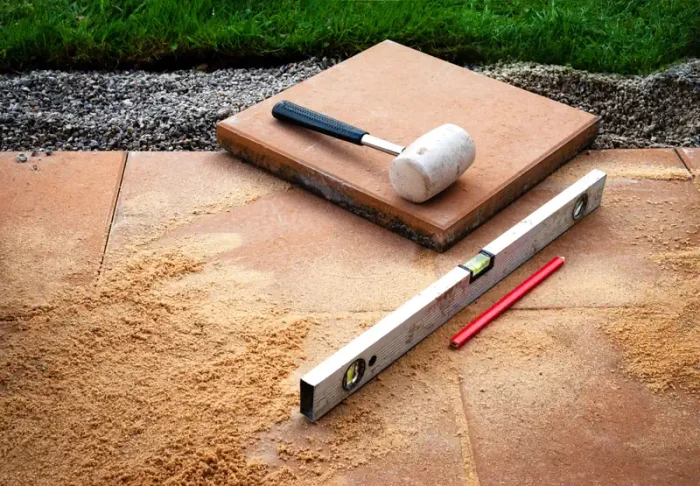
When it comes to finding the most cost-effective material for hardscaping, concrete is always a great choice. It’s incredibly durable and relatively inexpensive compared to other materials like stone or brick. Plus, its neutral color makes it versatile and easy to blend into any landscape design. You could also opt for gravel or mulch as both are very popular choices due to their durability, affordability, and wide range of colors available. Wood may also be an option depending on the type used; however, keep in mind that it will require more maintenance than other materials such as concrete or gravel. Finally, plastic or rubber pavers provide excellent drainage capabilities while still staying within a reasonable price point.
So if you’re looking for a way to spruce up your yard without breaking the bank then look no further! With these cost-effective materials at your disposal, you can create the perfect outdoor space without going over budget – now who doesn’t love saving some extra cash?
How Much Maintenance Is Required For Hardscaping Materials?
When it comes to hardscaping, maintenance is an important factor to consider. Depending on the materials used for your project, there can be varying levels of required maintenance and upkeep. Knowing what kind of maintenance each material requires will help you determine which ones are best suited for your needs in terms of both cost and long-term care.
The amount of maintenance needed for hardscaping depends largely on the type of material chosen. Some require more attention than others, such as regular cleaning or sealing to prevent damage from weathering or wear and tear over time. Materials like natural stone may need occasional sealing while concrete pavers generally only need sweeping and light cleaning with a power washer every few years. Additionally, some materials might require additional repairs if they become damaged due to extreme weather conditions or heavy foot traffic.
It’s important to take into account any associated costs that come along with maintaining your hardscaping materials so that you don’t end up spending more money down the line than anticipated. Research different materials ahead of time to get an idea of their expected lifespan and necessary level of care so you can make sure your investment will pay off in the long run. There are also plenty of online resources available with helpful tips on how to maintain various types of hardscape elements for extended use.
What Are The Best Materials For Hardscaping In A Humid Climate?
Have you ever wondered what the best materials are for hardscaping in a humid climate? It’s an important decision, as these materials will need to endure hot and wet weather. Coincidentally, choosing durable and cost-effective materials with low maintenance requirements is key when it comes to hardscaping in a humid environment.
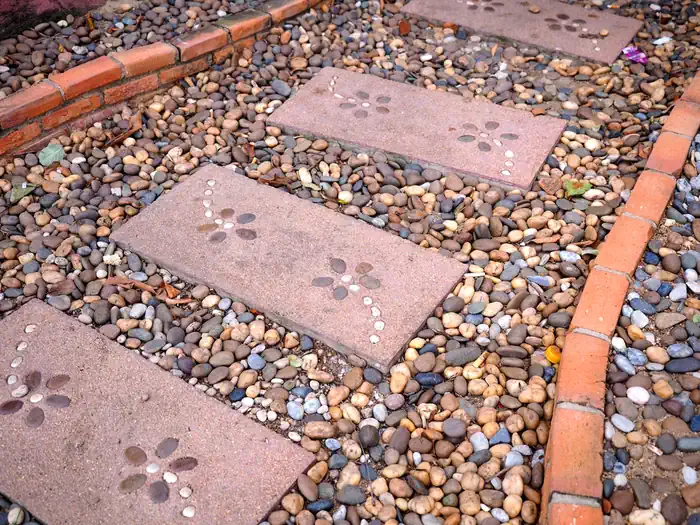
When selecting your hardscaping material, take into account how well the product can withstand heat and moisture levels of your location. For example, some composite decking boards may be more suitable than wood if you live in a particularly humid area because composites won’t swell or warp like wood does. If you’re looking for something that stands out from traditional hardscaping options but also offers durability in a humid climate then consider natural stone or brick pavers instead. Both products provide excellent performance even when exposed to high humidity levels over time.
Whatever option you choose, make sure that it’s capable of enduring both temperature fluctuations and precipitation without sustaining damage too quickly– this way you’ll get maximum value from your investment. Additionally, look for warranties on any materials you purchase so that if something goes wrong due to wear or tear caused by exposure to humidity, then you have recourse should it become necessary. Doing all of this research up front can save headaches down the line!
Choosing the right hardscaping materials for your yard can be a daunting task. You want to ensure that you are getting quality and durable products, as well as something that fits within your budget. After doing some research into the different materials available, it’s time to make a decision.
For example, if you live in an area with extreme weather conditions like humidity or high winds, granite is an excellent choice because of its durability and resistance to damage from these elements. It also requires minimal maintenance and will give your outdoor space a stunning look. On the other hand, if cost is most important to you, then concrete may be a better option since it is more affordable than stone but still very strong and resilient.
No matter what material you choose for your hardscaping project, keep in mind that regular maintenance will help preserve its beauty over time. Make sure to inspect it regularly for any signs of wear and tear so that you can address them quickly before they become bigger issues down the road. With careful planning and consideration when selecting which material best suits your needs, you’ll have beautiful hardscape features in no time!


